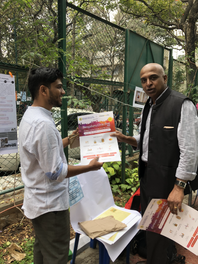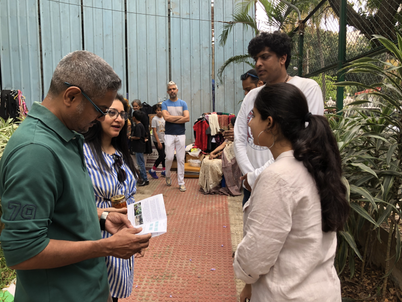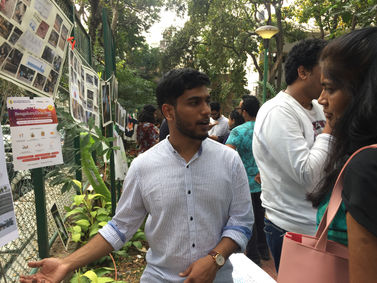
Going Global from Local
January 2019
Community & Development
Context
Cooke Town, Bangalore.
Duration
1 month.
Self Initiated.
Field Partners:
David V. (Architect, Urban Planner & Designer)
Bianca M. (Interior designer, Urban planner & Designer)
Manan G. (Civil Engineer, Urban Planner & Designer)
The project focused on communities and stakeholders to understand and engage with critical theories of development. The aim was to understand the notion of development among various age groups and understand their aspirations towards development. The objective was to examine patterns in which people self organise into communities, the way they envision development, policy inferences, and the government structure that govern these spaces. Tools of mapping and metrics were used to explore the relationship between practices- patterns-processes that affects development.

Over the years planned or unplanned actions have had differential outcomes within the society and its communities. Through the project, I interacted with multiple communities in Cooke Town to understand ways in which people self-organise into communities, envision development and interface with the policy and governance structures that govern the spaces that they inhabit. Through the tools of mapping and metrics, I explored the relationships of people-networks-time and practices-patterns-processes that manifest into trajectories of ‘development’. The exploration was through an inquiry to understand the meaning of community and the underlying aspirations on development, of different age groups in a community. The methodology required rigorous site visits, using various tools such as mapping, tracing, photographs, test walks and interaction with various stakeholders, academicians and community members, after extensive secondary research.
Often when we think of community, we think in geographic terms. However, communities can also be defined by common cultural heritage, language, and beliefs or shared interests. An individual may be part of multi communities due to varying interactions by an individual in a society. Relationships, whether with people or the land, define a community for each individual. A Harvard Medical School Research has demonstrated that a relationship and sense of connection are greatest predictors of mental and physical health. In other words, as Thomas Madrecki an Urban planner says, “The quality of life improves when we feel engaged and empowered”. While the development is influenced by various economical, social, political and religious reforms, the need and aspirations on development also evolve with time. Communities and Quality of life depend upon how much do we engage with the environment around us. The study aims to understand the meaning of community and the underlying aspirations on development, of different age groups in a community.
The study was introduced back to the community as an engagement at Hand-in-Hand flea market to open up a space for dialogue and discussion around the development. The contrasting aspirations of Global Development and Place-based development were introduced. A further layer was added by sharing, how a global idea needs to break down for active engagement, which is reflected in place-based development. Thus, the understanding of going Global from Local emerged.
In an elaborate discussion with one of the members, it was highlighted that Global Development Ideas does leave a feeling of helplessness and when we break it to a local area, interventions can be made, setting an example for other communities. Also, members picked on the highlighted aspirations and shared their opinions and experiences. The members also shared the need for such engagement to continue and the necessity to implement these ideas. An enthusiastic gentleman, Mr Anthony, shared how this study can be scaled up and used as a base by other communities. He further shared a model, of appointing ten volunteers from each community and sharing the study as a base map for active engagement. Interestingly, the study provided space and context for people to share their stories, ideas and also connect at a level. We were also warmly invited by Mr Vinod Jacob, to be a part of Civic Fest and present our study there.
Therefore my inquiry, does not give an uniform unique design to shelter. Because each design has to be done carefully including cultural values, social adequacy. Our task is to redefine temporary houses that are adequate including local cultures.




























